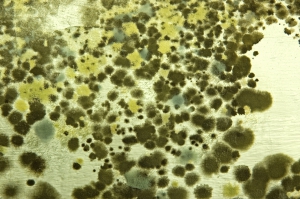A/C Mold Removal Services
Residential HVAC Mold Removal Solutions
A Plus Enviro-Services residential duct and vent cleaning specialists are certified and trained in property air duct cleaning and HEATING AND COOLING system mold cleansing and restoration. We offer customized domestic A/C duct and vent cleansing, mold removal, and other cleaning services. Our mission is to use inexpensive, instructional, honest, local and high quality assistance to our residential clients by enhancing their indoor air quality, energy performance, and safety. Did you know airborne impurities are pulled into the duct whenever the heating and cooling system runs. Gradually, these pollutants increase inside the ductwork, forming an ideal breeding place for mold, germs, fungis, and other microorganisms.
How We Do It

The existence of microbial development (mold) in a HVAC system is a common issue and a variety of aspects can contribute to the microbial growth. The HVAC system, including piping and drain pans, can be sources of microbial growth. An elevated mold condition can trigger many different adverse effects with the most common issue being allergy symptoms. The goods new is that normally mold contamination in A/C systems and air vents are restricted to small locations.
Cleaning is usually not really complicated. Do not lose your cash with unqualified business and fraudsters. Call us for a totally free and academic price quote today. Strong Acid Water Sanitizer A Plus Enviro-Services uses a strong acidic water as a sterilizing representative because it's organic, completely safe for human beings, animals, and the environment. This strong Acidic Water is an electrolytic water with electric capacity, which implies that its chemical decomposition is produced by passing an electrical current through a liquid or solution containing ions. This consists of the hypochlorous acid (SDS) produced from an anode when electrolysis takes place. It is made by applying an electrolysis enhancer https://www.washingtonpost.com/newssearch/?query=Mold inspection to faucet water, this in itself is not a chemical.
Strong Acidic Water 2.5 pH works as an antifungal, antibacterial, and an antiviral agent. This water kills bacteria within an average of 30 seconds, and because of this the water is more powerful than popular disinfectants and it has multi-purpose usage. Strong Acidic water was approved for sanitizing food in June 2002, in accordance with the Food Health Law, under the name hypochlorous acid water.
Find out more Why Choose Us A Plus Enviro Provider Inc. DBA Air Duct Cleaning Plus is fully licensed, bonded and guaranteed. What our customers are saying We can highly recommend them as an extremely friendly and expert specialist who helped us significantly with a recent inspection of our house's air duct/vent system.
Indoor mold Wikipedia
Fungal development that develops on wet materials Indoor mold on the head jamb of the window in a multi-storey structure. Mold (American English) or mould (British English), likewise often described as mildew, is a fungal growth that establishes on damp products. Mold is a natural part of the environment and plays a fundamental part in nature by breaking down dead raw material such as fallen leaves and dead trees; inside, mold development ought to be avoided. Mold reproduce by ways of tiny spores. The spores resemble seeds, but invisible to the naked eye, that float through the air and deposit on surfaces. When the temperature, moisture, and readily available nutrient conditions are right, the spores can form into brand-new mold colonies where they are deposited.
Direct exposure to high levels of mycotoxins can cause neurological problems and death. Prolonged exposure (for instance, day-to-day exposure) can be particularly damaging. Mycotoxins can continue the indoor environment even after death of the fungi. They can adhere to dust particles and can spread through the air attached to these dust particles or spores. [3] There must be very particular temperature and humidity conditions in order for fungi to produce mycotoxins.
Signs [modify] Signs of mold direct exposure may include nasal and sinus congestion; runny nose, eye irritation; scratchy, red, watery eyes, breathing problems, such as wheezing and problem breathing, chest tightness, cough, throat irritation, skin inflammation (such as a rash), headache, and relentless sneezing.
Immune-compromised people and individuals with persistent lung health problems, such as obstructive lung disease, may get serious infections in their lungs when they are exposed to mold. These individuals should stay away from locations that are likely to have mold, such as compost heap, cut turf, and wooded locations.
Asthma [modify] Babies may establish breathing signs as a result of direct exposure to Penicillium, a fungal genus. Signs of mold-related breathing issues in an infant consist of a persistent cough or wheeze. Increased exposure increases the probability of establishing breathing symptoms during the very first year of life. Studies have actually shown a correlation between the likelihood of developing asthma and direct exposure to Penicillium.
Causes and growing conditions [modify] Mold is found all over and can grow on practically any compound when wetness exists. They reproduce by spores, which are brought by air currents. When spores arrive on a moist surface area ideal for life, they begin to grow. Mold is usually discovered inside at levels which do not affect most healthy people. Since typical structure materials are capable of sustaining mold development and mold spores are ubiquitous, mold growth in an indoor environment is normally associated with water or moisture direct exposure and may air quality tests for mold - www.precisionenviro.net/ be brought on by incomplete drying of flooring materials (such as concrete). Flooding, leaky roofings, building-maintenance or indoor-plumbing issues can result in interior mold growth. Water vapor frequently condenses on surface areas cooler than the moisture-laden air, making it possible for mold to grow. [citation required] This wetness vapor travels through walls and ceilings, typically condensing during the winter season in environments with a long heating season. Floorings over crawl areas and basements, without vapor barriers or with dirt floorings, are mold-prone. The "doormat test" spots moisture from concrete slabs without a sub-slab vapor barrier.